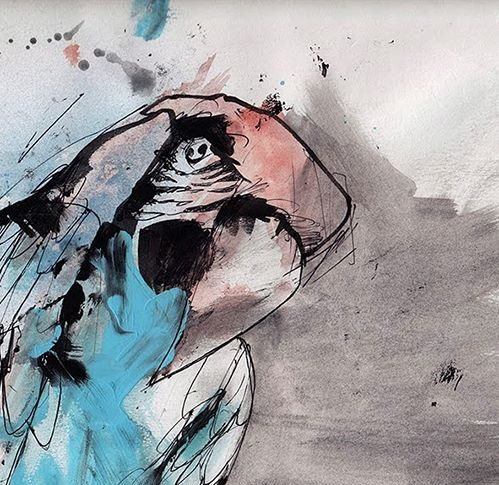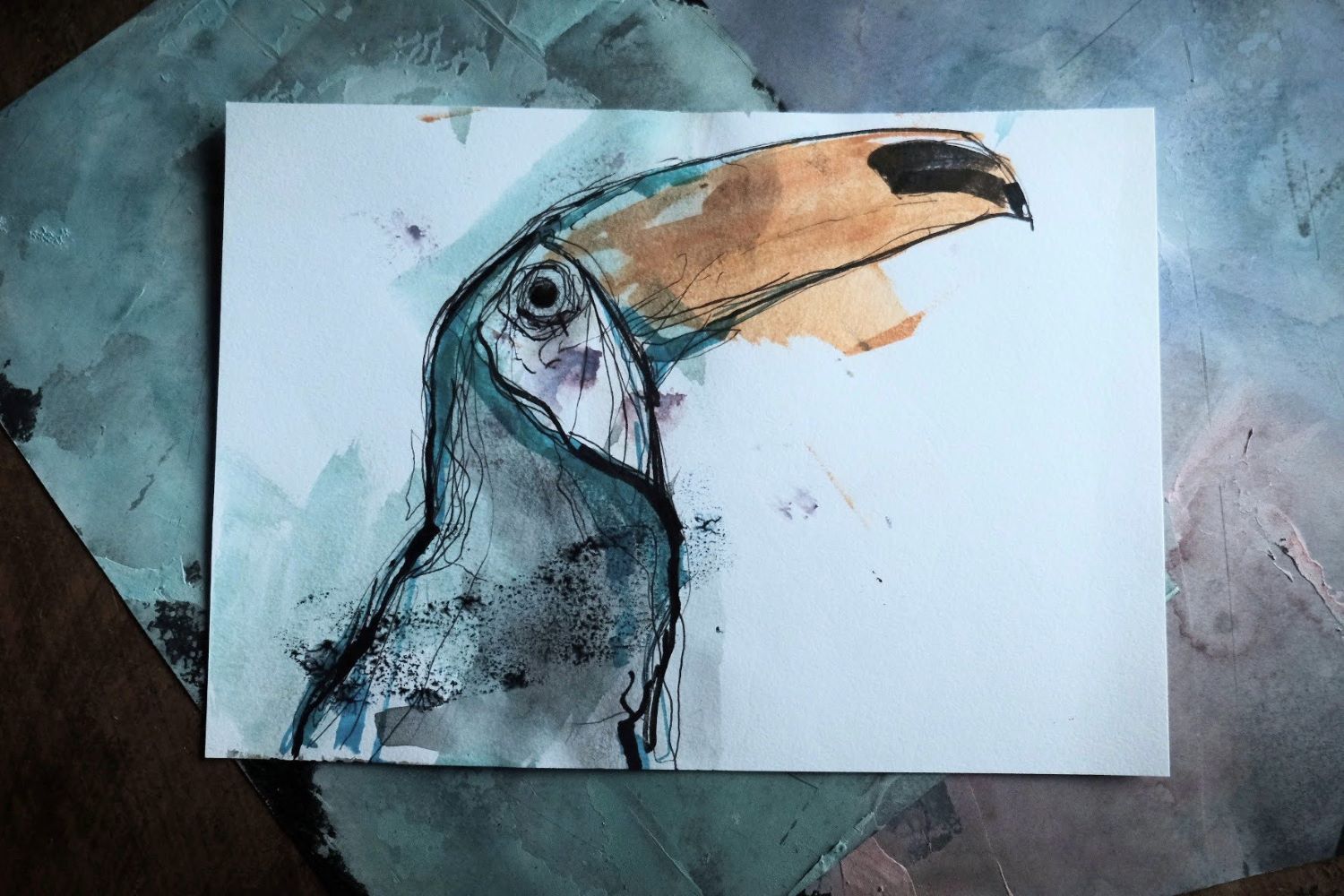Finding your style of drawing can be a challenge, but it's definitely worth the effort.
So, how do you find your style of drawing?
Short answer: By experimenting with different mediums, techniques, and styles, you'll gradually start to develop your unique way of drawing. You style will start to show itself the more you draw over time.
In this post, I'll share some tips on how to find your style of drawing.
Just know, everyone who spends a lot of time drawing, will naturally develop a unique style of drawing – it just takes a little bit of time and effort to find it.
Here are a few tips and tricks to help you discover how to find your style of drawing.
1. Find artists you admire
When you're trying to find your art style, a great place to start is by looking at other artists' work and seeing what you like and don't like.
Once you've found a few artists whose work you enjoy, take some time to study their drawings closely.
Notice the way they use line, shape, and color in their work, and how they compose their drawings.
Then, start incorporating some of these elements into your work.
How to study artists' work closely
When you're studying an artist's work, really take the time to look at the details.
Notice the way they use line, shape, and color in their work, and how they compose their drawings.
Here are a few things to keep in mind as you're looking at another artist's work:
Line: Look at the thickness of the lines the artist uses and how they vary throughout the drawing.
Also, notice if the artist uses continuous lines or dotted lines and whether they're curved or straight.
Shape: Take note of the different shapes present in the artwork and how they interact with each other.
Color: Look at the colors the artist has used and see if they create any kind of pattern or harmony.
Also, notice if the colors are dull or bright and whether they create a feeling of warmth or coldness.
Try experimenting with different line thicknesses, shapes, and colors to see what kinds of effects you can create.
Remember that there are no “right” or “wrong” ways to use these elements—it's all about experimentation.
Finding artists whose work you admire is a great way to start exploring your art style.
2. Experiment with a variety of subjects
One of the best ways to develop your style is by practicing as much as you can.
The more you draw, the better you'll become at translating the images in your head onto paper.
As you practice, you'll also start to develop little tricks and shortcuts that are specific to your way of working.
And before you know it, people will start to recognize your drawings because they'll have a distinct “look” that's all your own.
Experimentation is key
Another great way to develop your style is by practicing drawing a variety of different subjects.
Try drawing people, animals, landscapes, buildings, flowers, etc.
By experimenting with the different subject matter, you'll start to develop a unique way of approaching each drawing, and your style will begin to emerge.
Pay attention to details
Finally, pay attention to the small details in each drawing that you do.
It's often these small details that make someone's work recognizable and distinctive.
Do you tend to use a lot of thick lines?
Or do you prefer thin, delicate lines?
Do you like to add a lot of shading?
Or do you prefer clean, simple images?
Asking yourself questions like these will help you narrow down what makes your work unique so that you can incorporate those elements into all of your future drawings.
Developing your style as an artist takes time and practice.
3. Draw from life (all the time)
Every artist struggles at some point to find their style.
You look at other artists' work and wonder how they achieved such a unique voice.
And you try to copy them, but it just doesn't feel quite right.
So what's the solution?
Start by drawing from life.
Forget about trying to replicate someone else's work or a style.
Instead focus on documenting the world around you with your drawings.
Over time, your style will begin to emerge through this process.
4. Draw what you see, not what you know
As an artist, one of the most important skills you can learn is how to sketch what you see.
This means capturing the richness and variety of what you're actually observing and not relying on what you already know.
When you're sketching from your imagination, use observation to help you create natural and life-like sketches.
And if you find yourself getting caught up in rules, don't worry about them.
Focus on seeing first, and the rest will follow.
5. Curiosity and exploration are the foundation of seeing
Being an artist is all about having the ability to see the world differently.
To see things that others might miss.
But sometimes, even artists need a little help seeing things in a new light.
Look at your subjects as if you're seeing them for the first time.
When you approach a subject with fresh eyes, you're more likely to see all of the unique details that make it special.
To avoid making assumptions about how something should look, really take the time to observe everything about it—even the smallest details.
This will help you create sketches that are more accurate representations of what you're seeing, rather than just sketches of your idea of what something should look like.
It sounds too simple to be effective, but it’s one of the most efficient tactics for creating interesting sketches.
Observing all the interesting things like light, shadow, imperfections, characteristics, and more.
Our eyes are the only things that can provide us with this information.
Notice how he's capturing and focusing on the interesting shapes created by the shadows and light as they hit the petals.
Our minds are inadequate when compared to the richness of details we observe with our eyes.
6. Draw with different drawing supplies
As an artist, it's important to experiment with different mediums, techniques, and styles.
The more you experiment, the more you'll learn about what you like and don't like.
This will help you find your unique style of drawing.
Markers
Markers are a great way to add bold colors to your sketches.
They come in a wide variety of colors and variations, so you can experiment with different color combinations.
You can also find markers specifically designed for sketching, which means they won't bleed through the paper.
If you're using regular markers, make sure to use a piece of scrap paper underneath your sketch so the ink doesn't bleed through.
Pencils
Pencils are a classic drawing tool that every artist should have in their arsenal.
They're perfect for adding shading and detail to your sketches.
Be sure to experiment with different types of pencils to find the ones that you like best.
For example, some artists prefer graphite pencils while others prefer charcoal pencils.
Ultimately, it's up to you to decide which type of pencil works best for your sketches.
The best way to figure this out is by experimentation!
Pens
Pens are another classic drawing tool that can be used for a variety of purposes.
They're perfect for adding fine details and lines to your sketches.
Like pencils, there are a variety of different pens available on the market.
Some artists prefer fine-tipped pens while others prefer thicker markers.
Again, it's all about experimentation! Try out different pens until you find the ones that work best for your drawings.
There are a variety of different drawing supplies available on the market, and each has its purpose and advantages.
By experimenting with different mediums, techniques, and styles, you'll be able to find the ones that work best for you and your sketches.
What if I can't find any artists whose work I admire?
If you're struggling to find artists whose work you admire, think about the kind of art you like. Do you prefer bright and colorful drawings or more muted and realistic ones? Do you like abstract art or detailed realism? Once you have a better idea of the kind of art you're drawn to, it will be easier to find artists whose work you admire.
I've been drawing for a while but I still don't feel like I have my style. What should I do?
If you've been drawing for a while but haven't found your style yet, don't worry. It can sometimes take a while to develop your unique way of drawing. The best thing to do is keep practicing and experimenting, and eventually, your style will start to emerge.
I'm not sure if the style of drawing I like is “good” or not. What should I do?
There's no such thing as a “good” or “bad” style of drawing – it's all about what you like and don't like. So if you're enjoying the way you're drawing, then keep at it! The more you practice, the better your drawings will become.
I'm still not sure what my style is. How will I know when I've found it?
It can sometimes be difficult to know when you've found your style of drawing. The best thing to do is show your work to others and listen to their observations. You'll start to hear similarities in how your work is described by others.
Is it okay to change my style of drawing over time?
Yes, there's no problem with changing your style of drawing over time. It's quite normal to experiment with different styles as you develop as an artist. So if you feel like you want to try a new approach to drawing, go for it. You may find that you like the new style better, or you may decide to go back to your old style – it's all up to you.

